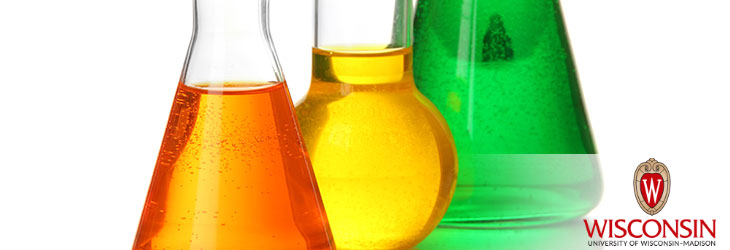Materials & Chemicals

Superior Plastic Parts
WARF: P140042US01
Inventors: Lih-Sheng Turng, Xiaofei Sun
The Wisconsin Alumni Research Foundation (WARF) is seeking commercial partners interested in developing a method for fabricating foamed, injection-molded components with improved toughness and ductility.
Overview
Plastics are the most widely used materials in the United States, surpassing steel, copper and aluminum combined by volume. While ubiquitous, fossil-based plastics are becoming more and more costly to produce.
Special injection molding processes can reduce raw material and energy usage, thereby cutting production costs and waste. UW–Madison researchers previously developed one such process called supercritical injection molding foaming technology (SIFT), which uses gas-laden polymer pellets. These pellets are processed by conventional injection molding machines and turned into foamed components.
The process saves on material costs and improves production efficiency. Since less material is used, components formed in this way normally exhibit somewhat reduced ductility and toughness compared to conventional solid injection molded parts. Modifiers like rubber particles and fibers can be used, but are expensive, add weight and degrade the component’s high temperature performance.
Special injection molding processes can reduce raw material and energy usage, thereby cutting production costs and waste. UW–Madison researchers previously developed one such process called supercritical injection molding foaming technology (SIFT), which uses gas-laden polymer pellets. These pellets are processed by conventional injection molding machines and turned into foamed components.
The process saves on material costs and improves production efficiency. Since less material is used, components formed in this way normally exhibit somewhat reduced ductility and toughness compared to conventional solid injection molded parts. Modifiers like rubber particles and fibers can be used, but are expensive, add weight and degrade the component’s high temperature performance.
The Invention
UW–Madison researchers have developed a new method to create foamed, injection-molded plastic blends with significantly increased toughness and ductility compared to conventional foamed parts.
The new process begins with a polymer blend with two properly selected polymer materials, such as polypropylene (PP) and high-density polyethylene (HDPE), or PP and low-density polyethylene (LDPE), which exhibit a dispersed secondary phase at sub-microscale in the primary matrix. The polymer blend is heated along with a supercritical fluid in an extruder to produce a melt, which is then extruded into gas-laden pellets. The gas-laden pellets can be fed into the injection barrel of a typical machine, plasticized and then injected into a mold cavity (or cavities) where the final part is made.
The process forms a lightweight component with microscale air cavities. Upon tensile loading, debonding of the secondary phase facilitates the interconnection of microcellular voids to form channels such that the stretched component becomes a bundle of fibrils. Compared to other toughening methods, this method achieves a more significant improvement in ductility and toughness. It also has the benefit of higher production efficiency, better dimensional stability, and greater design freedom thanks to the foamed injection molding process.
The new process begins with a polymer blend with two properly selected polymer materials, such as polypropylene (PP) and high-density polyethylene (HDPE), or PP and low-density polyethylene (LDPE), which exhibit a dispersed secondary phase at sub-microscale in the primary matrix. The polymer blend is heated along with a supercritical fluid in an extruder to produce a melt, which is then extruded into gas-laden pellets. The gas-laden pellets can be fed into the injection barrel of a typical machine, plasticized and then injected into a mold cavity (or cavities) where the final part is made.
The process forms a lightweight component with microscale air cavities. Upon tensile loading, debonding of the secondary phase facilitates the interconnection of microcellular voids to form channels such that the stretched component becomes a bundle of fibrils. Compared to other toughening methods, this method achieves a more significant improvement in ductility and toughness. It also has the benefit of higher production efficiency, better dimensional stability, and greater design freedom thanks to the foamed injection molding process.
Applications
- Producing lightweight, high-quality plastic parts with high ductility and toughness for auto, aerospace and sports equipment
Key Benefits
- Components show significantly improved ductility and toughness
- High production efficiency
- Reduced material consumption
- Better dimensional stability and greater design freedom
- Method is compatible with standard injection molding machinery.
Additional Information
Related Technologies
Tech Fields
For current licensing status, please contact Michael Carey at [javascript protected email address] or 608-960-9867